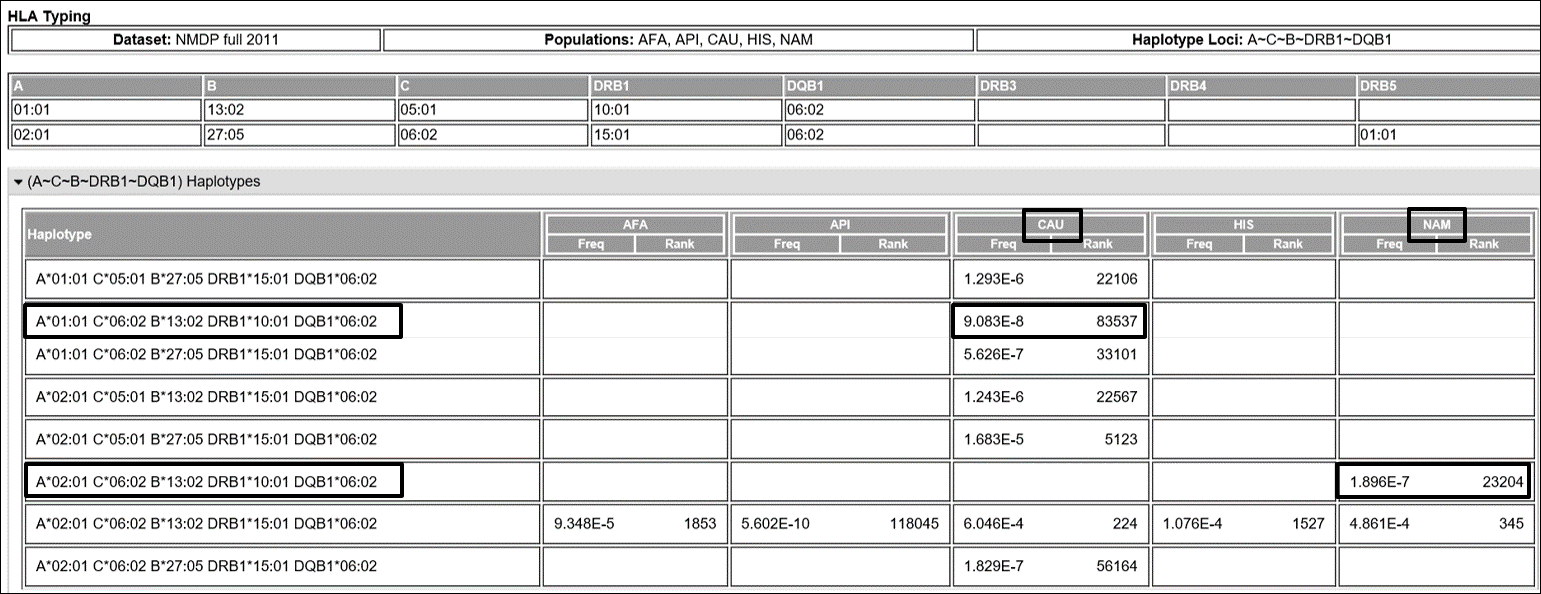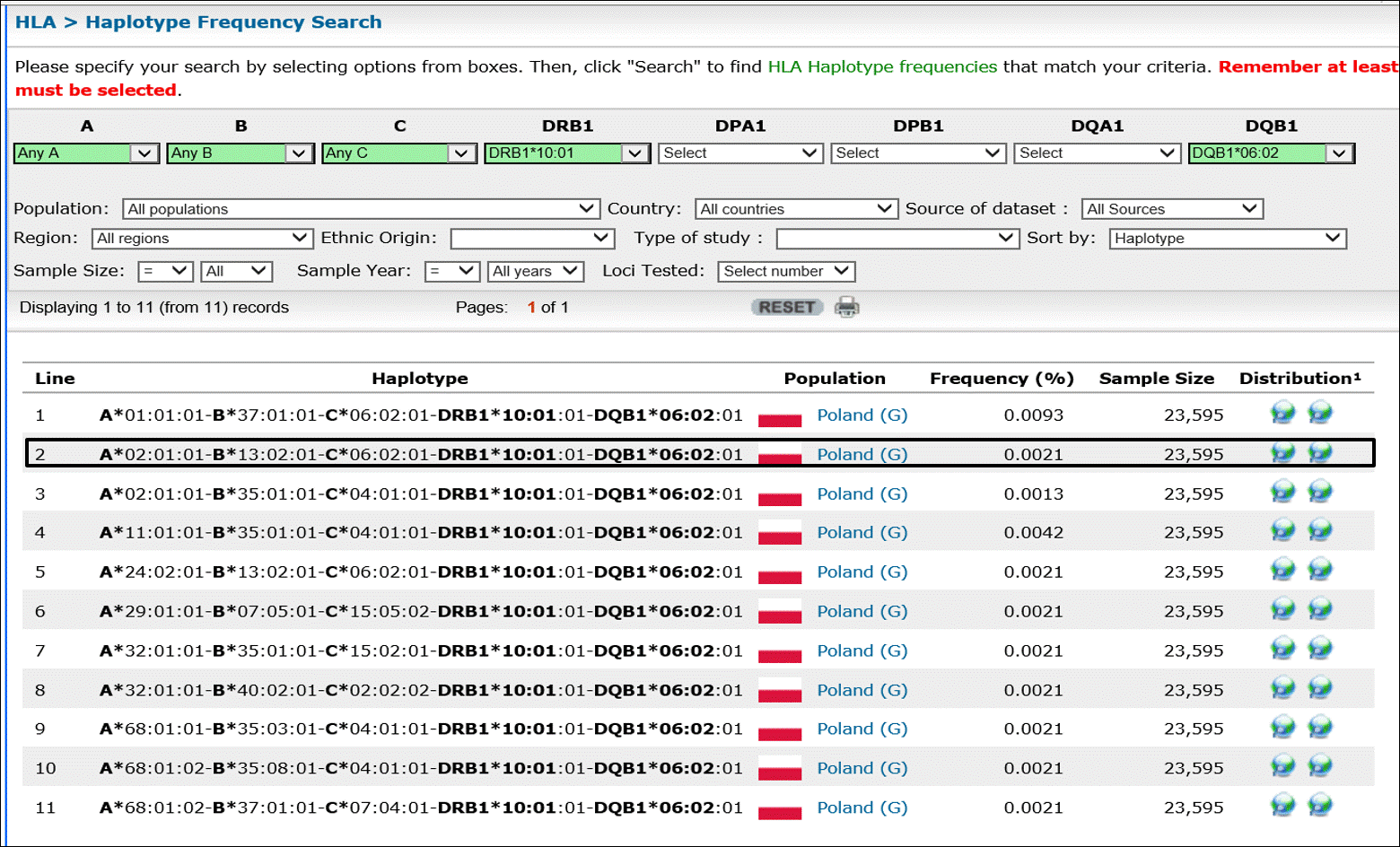Rare HLA DRB1*10-DQB1*06 Linkage Disequilibrium: A Case Study That Emphasizes the Need of Having an HLA Toolbox
VRL-Eurofins, Centennial, CO
Meeting: 2020 American Transplant Congress
Abstract number: A-281
Keywords: Allocation, HLA antigens
Session Information
Session Name: Poster Session A: Histocompatibility and Immunogenetics
Session Type: Poster Session
Date: Saturday, May 30, 2020
Session Time: 3:15pm-4:00pm
 Presentation Time: 3:30pm-4:00pm
Presentation Time: 3:30pm-4:00pm
Location: Virtual
*Purpose: This case study highlights the need to use different tools to derive and validate HLA typing results especially in instances of rare typing.
*Methods: Low/intermediate resolution typing was performed using DNA extracted from blood drawn into ACD tubes. DNA concentration and purity were assessed. The HLA typing was performed using RT-PCR (LinkSeq), RSSO (One Lambda) and NGS (Illumina).
*Results: Our laboratory performs deceased donor HLA typing for OPOs. We received a specimen for STAT typing from a 55-year-old Caucasian male for organ transplantation. The Class I typing was common: HLA-A*01, *02; HLA-B*13, *27; HLA-C*05, *06. Class II typing wasn’t as common; in particular the linkage disequilibrium between DRB1-DQB1. Typing obtained was DRB1*10-DQB1*06; a haplocheck warning was issued by the software. This is a rare association; the most common association in all populations is DRB1*10-DQB1*05. The testing was repeated with a different lot and the same results were obtained. In conjunction with typing the following tools were used: HaploStat, Allele Frequency Net, DRB1-DQB1 Association tables, NMDP High Resolution HLA Alleles and Haplotype Frequency. All the association tables had the most common association disequilibrium of DRB1*10-DQB1*05. The Allele Frequency Net Database and HaploStat websites were the most useful tools. The HaploStat search gave two possible haplotypes: (i) Caucasian A*01/B*13/C*06/DRB1*10/DQB1*06 with a frequency of 9.083E-8 and (ii) Native American A*02/B*13/C*06/DRB1*10/DQB1*06 with a frequency of 1.896E-7. In the Allele Frequency Net database, we observed 11 hits for DRB1*10-DQB1*06. This association has been observed in Caucasians at a low frequency. The haplotype observed as it relates to the donor was; A*02 B*13 C*06 DRB1*10 DQB1*06 haplotype with a frequency of 0.0021%. Organs were allocated in DonorNet® as DRB1*10-DQB1*06. The donor was retrospectively typed by RSSO and NGS which yielded the same results as RT-PCR.
*Conclusions: This case demonstrates the usefulness of the HLA data tools in rare linkage disequilibrium results to aid in the confidence of accurate STAT test results.
To cite this abstract in AMA style:
Dionne S, Santiago L, Shetty S. Rare HLA DRB1*10-DQB1*06 Linkage Disequilibrium: A Case Study That Emphasizes the Need of Having an HLA Toolbox [abstract]. Am J Transplant. 2020; 20 (suppl 3). https://atcmeetingabstracts.com/abstract/rare-hla-drb110-dqb106-linkage-disequilibrium-a-case-study-that-emphasizes-the-need-of-having-an-hla-toolbox/. Accessed July 15, 2025.« Back to 2020 American Transplant Congress


